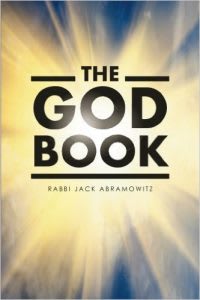15. The Simultaneity of Creation
The articles in this series are based upon ideas expressed in the Rambam’s Moreh Nevuchim (The Guide for the Perplexed). Numbers in brackets represent the book and chapter of Moreh Nevuchim where these ideas are discussed.
The Rambam previously stated [II, 25] that, were there sufficient scientific proof, he would have no difficulty writing off the Torah's creation account as an allegory. After all, there are far more references in the Torah to God having physical body parts and we have no trouble recognizing those verses as metaphors. However, since the scientific evidence is not so conclusive as to preclude the creation account, we do not discard the literal understanding of Genesis for the sake of a mere theory.
All this notwithstanding, while we accept the "big picture" of the creation account as written, that does not mean that every individual detail is meant to be taken literally. [II, 24] The Rambam supports this contention through logic: if every detail of the creation account were meant to be taken literally, what would be the point of the Sages keeping its meaning secret? Why would they employ symbolic terminology and refuse to teach the matter publicly? Clearly, there is much going on beyond the literal meaning of the text. (It should be noted that, even though we may not lecture publicly on the mysteries of creation, one who has mastered this subject is obligated to transmit some of what he has learned to some qualified students.)
The Rambam clarifies the difference between "first" (techila) and "beginning" (reishis). [II, 30] When something is first, it is not necessarily connected to or a cause of that which follows. For example, if I am the first resident to live in a particular house, that has no inherent bearing on who may live there after me. But when something is "the beginning," it is inherently part of that which follows. In some cases, the beginning need not even precede the rest of the thing. This makes sense as "reishis" comes from the word "rosh" (head). A person's head may be the foremost part of him, but it certainly did not precede the rest of him in existence.
An example of techila (first) occurs in Hoshea 1:2, "When God first spoke to Hoshea." An example of reishis (beginning) occurs in Genesis 1:1, "In the beginning." The practical difference of choosing reishis rather than techila is the implication that the universe was not formed from matter that preceded it in time, as time itself was part of creation. (The Rambam acknowledges Talmudic opinions that consider time to have preceded creation but he rejects them as creating more difficulties than they solve.)
Continuing to demonstrate the simultaneity of creation, the Rambam cites the Sages (Chagigah 12a) that the participle "es" in "Bereishis bara Elokim es hashamayim v'es ha'aretz" ("in the beginning, God created es the heavens and es the earth") signifies "together with," i.e., the heavens with all that they contain, and the earth with all that it contains. He brings further support from such verses as Isaiah 48:13, "I call them and they stand up together." The idea is that all things were created together and subsequently separated.
The Rambam illustrates this concept through the use of a Rabbinic analogy: let's say that a farmer plants several types of seeds on the same day. Some will sprout on the next day, others a day later, and still others on the day after that. Regardless of when they sprout, they were all sown at the same time. By the same logic, the Sages tell us that the lights that were fixed in their places on the fourth day were actually created on the first day (Bereishis Rabbah 1).
One more note on the simultaneity of creation: the Rambam says that the "earth" that God created includes all four of the classical "elements," namely earth, water, air and fire. (We could probably consider them the three stages of matter - solid, liquid and gas - plus energy.) These are all mentioned in the earliest verses of the Torah as eretz (earth), mayim (water), ruach (air) and choshech. "Choshech" literally means "darkness" but the Rambam demonstrates through several Biblical sources that it also refers to fire. For example, Deuteronomy 4:36 says that God addressed us from the midst of fire, while Deuteronomy 5:19 says that He spoke to us from the midst of darkness. These and other verses demonstrate the relationship between choshech and fire.
We see from all this that God created everything ex nihilo at one time. What He did during the six days of creation was to put everything He created in its proper place.

